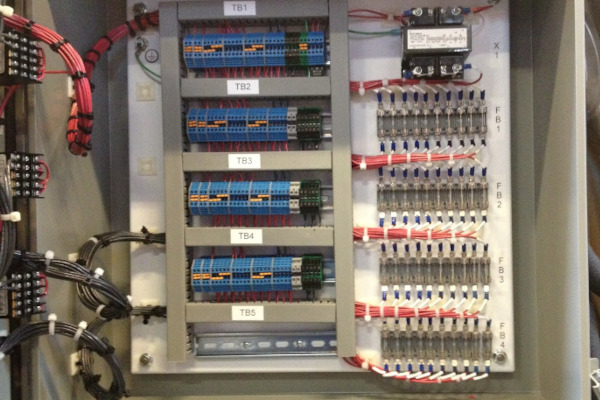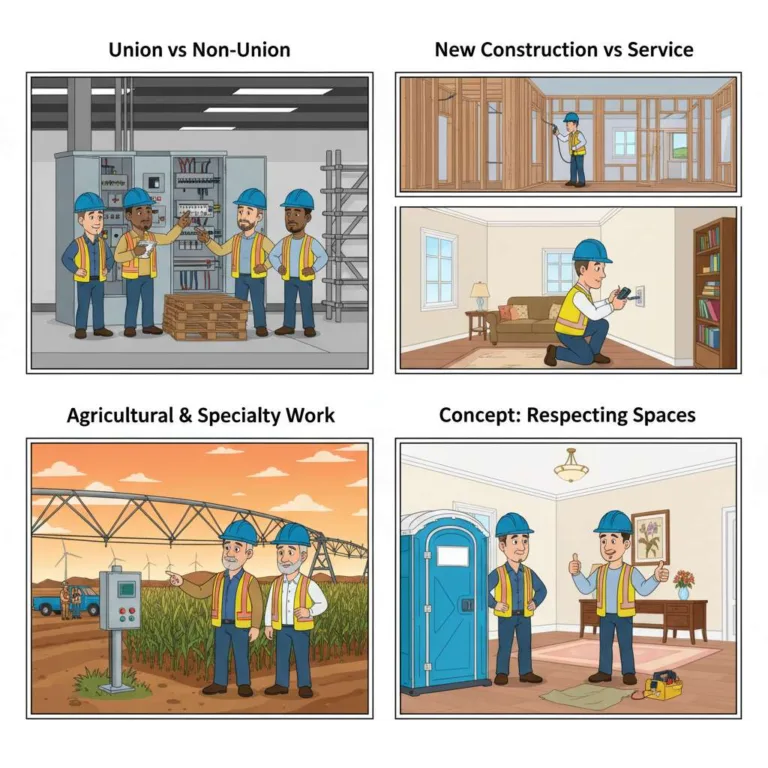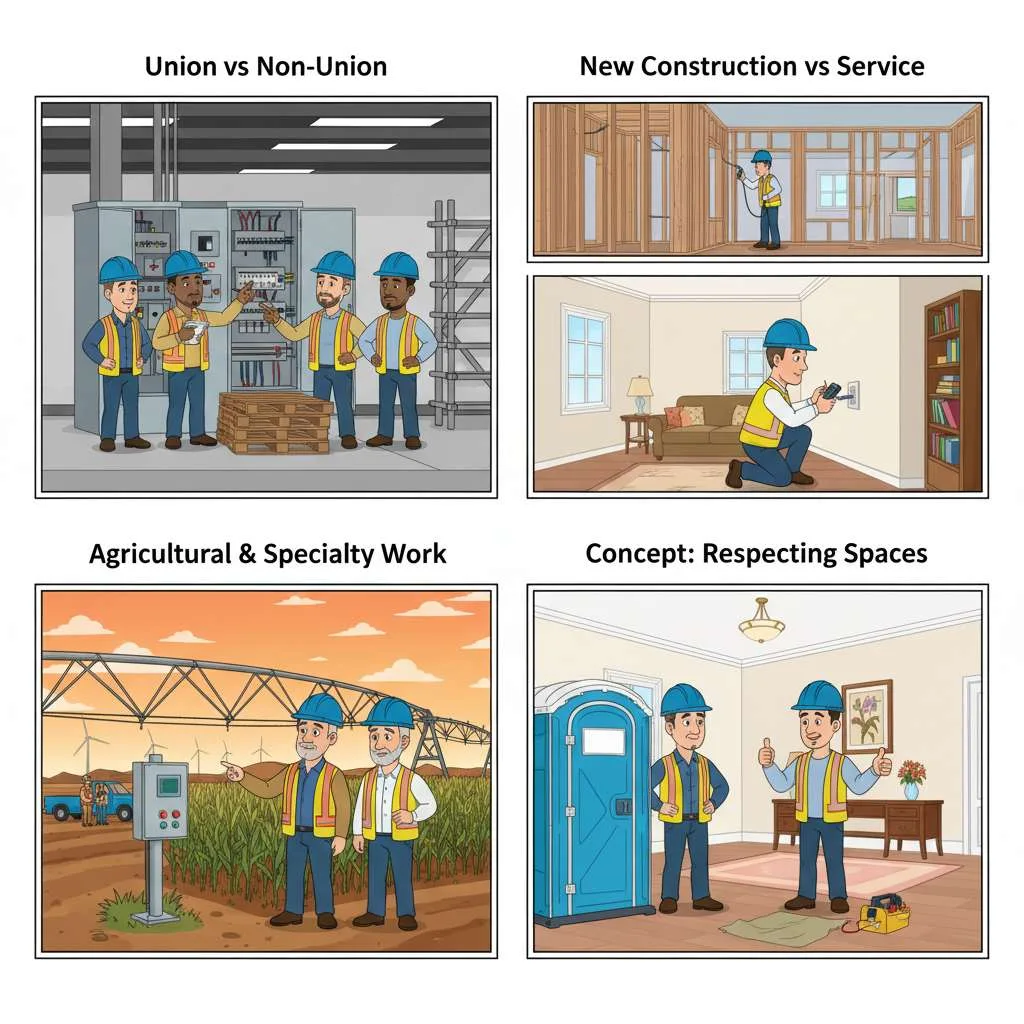Most electrical work falls into two broad categories, and each requires a completely different approach and mindset. Understanding this difference is key to finding where you’ll thrive.
New Construction
The Goal: Speed and efficiency. You’re building from a clean blueprint. The priority is to get everything done as quickly, cheaply, and safely as possible, often alongside dozens of other tradespeople.
Service Work
The Goal: Precision and trust. You are a guest in someone’s home or business. The mindset shifts to cleanliness, clear communication, and surgically solving a problem with the existing infrastructure.
“In new construction, you share a portable toilet with the crew. In service work, you ask permission to use a client’s restroom. That one difference explains the entire shift in mindset. You go from being a builder to being a trusted guest and problem-solver.”
Beyond the two main paths lies specialty work. In a region like West Central Minnesota, with a strong DIY culture for simple tasks, becoming a specialist in complex systems is the key to building a high-value, sustainable career. While some homeowners might replace an outlet, they won’t be engineering a power system for their farm.
The most critical specialty in our area is undoubtedly **Agricultural Electrical Work**. This is where true expertise shines.

Modern farm wiring is a highly specialized, industrial-level skill.
For an electrician used to residential work, a farm is a different world. It’s not just about wiring a structure; it’s about engineering a system to survive a constant assault while protecting uniquely sensitive assets—livestock.
The Environment is an Active Adversary
In a barn, the air itself is corrosive due to ammonia and moisture. Dust from feed and grain is combustible. Rodents are a constant threat to wiring. Every component must be chosen to withstand this relentless attack.
The Invisible Threat to Livestock
Stray voltage—tiny electrical potentials you can’t feel—can be stressful or harmful to animals, affecting their health and productivity. Protecting against it requires advanced techniques like equipotential planes, a concept almost entirely absent from residential wiring.
Industrial-Scale Power Demands
A modern farm is a small industrial campus. The power needed for grain dryers, augers, and large fans dwarfs residential loads. This requires a deep understanding of multi-building distribution, heavy motor loads, and often, three-phase power systems.
While I started in non-union new construction, I would advise anyone today to strongly consider the **Union**. It provides a structured path with protections for training, pay, benefits, and workplace conduct that are not always guaranteed elsewhere. Regardless of the path you choose, a foundation in new construction is invaluable for learning the fundamentals at a fast pace.
Now that we’ve mapped out the different fields, the next question is a personal one: is this trade right for you? In Part 3, we will cover the physical and psychological requirements of a long and successful career as an electrician.



